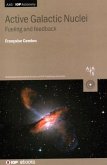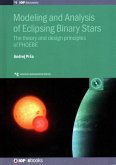Common envelope evolution is the most important phase in the lives of many significant classes of binary stars. During a common envelope phase, the stars temporarily share the same outer layers, with the cores of both stars orbiting inside the same common envelope. This common envelope is sometimes ejected and helps to explain the formation of a wide variety of astrophysical phenomena, including cataclysmic variables, X-ray binaries, progenitors for type Ia supernovae, and gravitational-wave mergers. Modeling common envelope evolution is a challenging problem, and this important process has typically been described in evolutionary models using very approximate treatments. This book explains the physics of common envelope evolution and relates it to the approximations that are frequently used for modeling the onset, progression, and outcome of common envelope phases. Key Features * The first book dedicated to the topic * Written by world-leading experts in the field * Provides a thorough overview of theoretical foundations and state-of-art numerical models * Suitable for graduate students and researchers








